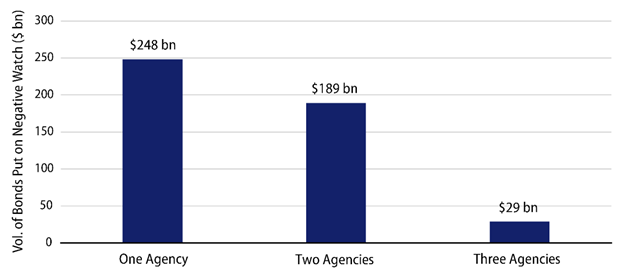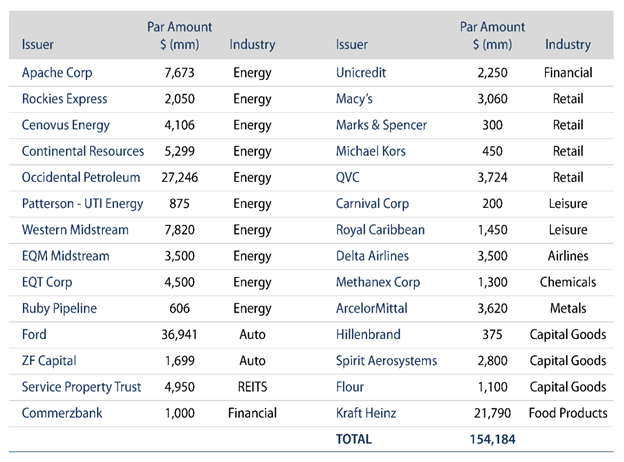Sponsored content
By Thomas V. McMahon, Senior Product Specialist, Western Asset Management
The recent wave of corporate bond downgrades has dropped many companies’ debt into the high yield sector. But could some “fallen angels” rise again?
Rating actions have come fast and furious over the past few months. Moody’s has announced over 600 downgrades in the past three months, an average of more than 200 a month compared to the monthly average of 40 in the past two years. It would appear that the downgrade trend will be with us for a while, which has major implications for those credits that are barely holding on to their investment-grade ratings. There is currently $973 billion of investment-grade corporates that are rated low BBB (BAA3 or BBB-). Of that amount, $466 billion is on a negative watchlist of at least one major rating agency.
Exhibit 1: Bonds on Negative Watch

Source: J.P.Morgan. As of date: 4 June 20. Past performance is no guarantee of future results. This information is provided for illustrative purposes only and does not reflect the performance of an actual investment.
Already this year the high-yield market has had to absorb $154 billon in fallen angels, which, when combined with $46 billion in net new issuance, has resulted in a 12.5% increase in the par amount of high-yield bonds in the Bloomberg Barclays High Yield Index since the start of the year. Not surprisingly, the industry with the largest amount of fallen angels is energy, with $63 billion of issues joining the asset class. Ford is now the largest issuer in the high-yield market with Occidental and Kraft the fifth and sixth largest, respectively.
Source: J.P.Morgan. As of date: 29 May 20. Past performance is no guarantee of future results. This information is provided for illustrative purposes only and does not reflect the performance of an actual investment.
To put this year’s fallen angel totals into historical perspective, 2020 has already had the greatest number of downgrades to below investment-grade on record, surpassing the annual amounts of the recession in 2002, the great financial crisis in 2009 and the commodity crash in 2015. With $466 billion of BBB- issuers on negative watchlist, fallen angel volume will continue to increase throughout the balance of 2020. Wall Street strategist estimates for fallen angel volume in 2020 vary from $200 billion to $500 billion.


